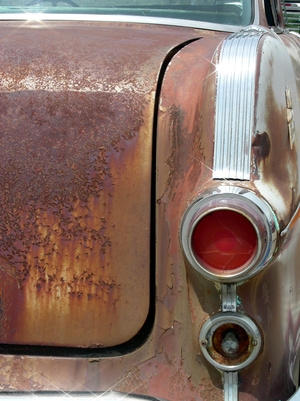
The application of lead on auto bodies is a process that has several advantages over using body filler. Once smoothed, lead leaves a metal finish that helps to keep vehicles in a more original condition. Lead can also be primed over and painted without any worries about it sinking or shrinking after being exposed to heat, a hazard that is commonly associated with body filler. Lead application can be quite challenging but the benefits make the extra effort worthwhile.
Prepare the auto body before applying lead. Remove all old paintwork and primer using a P80 grit sanding disc on a random orbital sander so that the area to be repaired is down to bare metal. Blow off all traces with dust to stop the lead becoming contaminated during application. Wipe clean with a cloth lightly soaked with spirit wipe.
Put on the safety goggles and welding gloves before turning on the oxyacetylene torch. Keep the torch approximately four inches from the surface of the auto body and warm the area that is being repaired. Keep the oxyacetylene torch moving to avoid excessive heat being applied as this can result in metal fatigue or stressing.
Add a small amount of lead lubricant to the auto body while it is still warm. Take the lead bar and place it onto the area being repaired. Keep the oxyacetylene torch in your spare hand and continue to add heat as necessary. Apply the lead using a twisting motion to help prevent it falling onto the floor. The heat from the oxyacetylene torch will help the lead bar to melt easily onto the panel and the lubricant will help to prevent the build-up of air-filled globules. Continue until the entire repaired area is covered with a sufficient amount of lead.
Take the wooden lead paddle and continue applying gentle heat to the repaired area. Smooth and shape the applied lead as it becomes pasty. Carry out regular visual checks to ensure that there are no obvious high spots on the repair. Even out the lead with the wooden lead paddle until the repaired area matches the original shape associated with the vehicle as closely as possible. Leave the lead to cool completely.
Use a dreadnought file to smooth off the applied lead until it is exactly even with the original surface of the car. Add lubricant as regular intervals to stop the file clogging and to preserve the integrity of the lead. Blow off all lead flakes with an air blower once the desired shape has been fully achieved and remove any remaining file marks by sanding over the repair with P80 grit sanding discs on a random orbital sander.